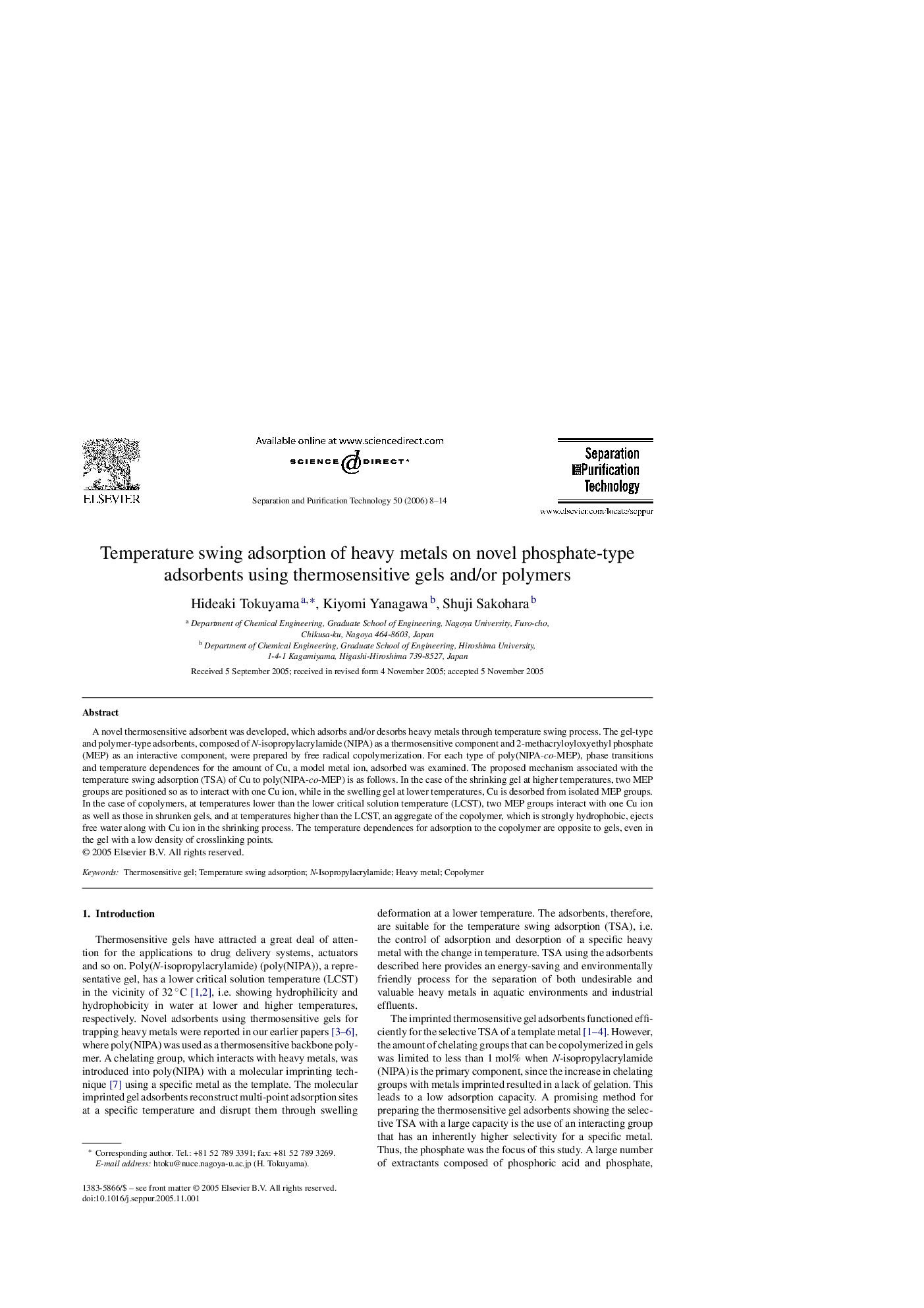| Article ID | Journal | Published Year | Pages | File Type |
|---|---|---|---|---|
| 644222 | Separation and Purification Technology | 2006 | 7 Pages |
A novel thermosensitive adsorbent was developed, which adsorbs and/or desorbs heavy metals through temperature swing process. The gel-type and polymer-type adsorbents, composed of N-isopropylacrylamide (NIPA) as a thermosensitive component and 2-methacryloyloxyethyl phosphate (MEP) as an interactive component, were prepared by free radical copolymerization. For each type of poly(NIPA-co-MEP), phase transitions and temperature dependences for the amount of Cu, a model metal ion, adsorbed was examined. The proposed mechanism associated with the temperature swing adsorption (TSA) of Cu to poly(NIPA-co-MEP) is as follows. In the case of the shrinking gel at higher temperatures, two MEP groups are positioned so as to interact with one Cu ion, while in the swelling gel at lower temperatures, Cu is desorbed from isolated MEP groups. In the case of copolymers, at temperatures lower than the lower critical solution temperature (LCST), two MEP groups interact with one Cu ion as well as those in shrunken gels, and at temperatures higher than the LCST, an aggregate of the copolymer, which is strongly hydrophobic, ejects free water along with Cu ion in the shrinking process. The temperature dependences for adsorption to the copolymer are opposite to gels, even in the gel with a low density of crosslinking points.
